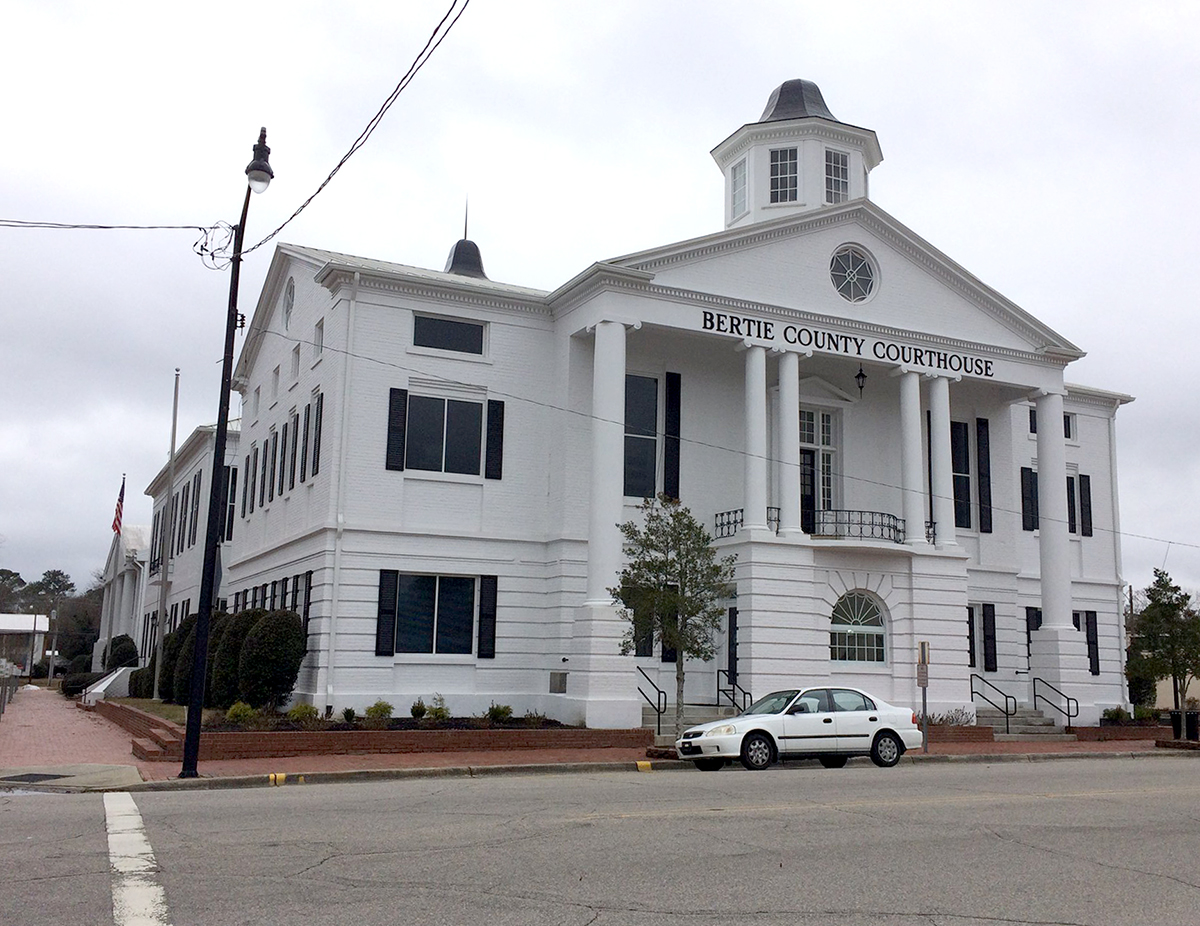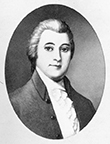
Part of a history series examining each of North Carolina’s 20 coastal counties.
Most of the earliest English settlers in North Carolina lived on the northern side of the Albemarle Sound. Their settlements built the foundation of North Carolina and evolved into the Colony’s first towns and political centers.
Supporter Spotlight
At this same time, the English were settling slightly to the west of the Albemarle Sound near the Chowan River. One of the first areas in which they built homes and plantations later became Bertie County. This county, which turns 300 years old this year, has been a center of political leadership, agricultural wealth and local tourism ever since the earliest times in Colonial North Carolina.
English settlement of the Cashie River and areas west of the Chowan River began in the mid-17th century. Some of the earliest immigrants such as Nathaniel Batts and Samuel Stephens lived near the confluence of Salmon Creek and Chowan River. Settlers following their lead moved either south from Virginia or west from the Albemarle region. They established corn and then tobacco plantations. These efforts were relatively successful, as farmers could take advantage of the rich alluvial land of the Cashie, Roanoke and Chowan rivers.

Plantations also used these rivers for transportation and connections with Colonial government on the eastern side of the Chowan. In addition to agriculture, the county produced staves and other wood products from its abundant timber resources.
The area that became Bertie County also played a strategic role in the Colony’s early treatment of Native Americans. While the earliest settlers bought land from local Native Americans and coexisted with them, outright theft and exclusion soon became the English policy. Tensions caused by this policy led to the Tuscarora War of 1711-1713. After the English victory, the Tuscarora, who had signed treaties with the Colony, were granted a reservation in present-day southern Bertie County known as Indian Woods.
In his history of Bertie County, Alan Watson notes that by 1801, “finding little sympathy among the white populace and having their land taken in (a) callous fashion, the aged, dwindling remnant of the Tuscarora (at Indian Woods) soon proved ready to move northward.” The Tuscarora sold the last rights to their land in 1831.
Supporter Spotlight
Following the Tuscarora War, the region west of the Chowan River quickly gained enough English residents to petition for a new county. In 1722, that petition was granted. A new county was formed, with its eastern boundary being the Chowan River and its western boundary being the “limits of the government,” according to Daniel Leroy Corbitt. Bertie County was named after two Lords Proprietor of North Carolina, James and Henry Bertie.
The centerpiece of town settlement in Bertie County was Windsor, formed at the head of navigation of the Cashie River. Windsor, named for the royal castle in England and incorporated in 1768, was one of the last towns in North Carolina sanctioned by the British monarchy. It joined other Colonial towns established in the 1760s including Salem, Winton and Charlotte. Windsor became the county seat of Bertie County in 1774. The present courthouse off King Street was built in 1889.
Bertie County was an economically successful antebellum county. It became the site of several plantations and plantation homes that have survived to the present day. The most notable was Hope Plantation, built in 1803 by future North Carolina governor David Stone. There was also Rosefield, built in the mid-18th century — present building first constructed circa 1786 — and at one point the home of William Blount, one of North Carolina’s three signers of the Constitution.

Blount later, as a senator from Tennessee, was found to have committed treason by plotting to hand French territory in the South over to Britain. “When will we cease to have Judases?” Abigail Adams wrote in a letter to her sister when she learned of Blount’s plans. Blount later became the first and only senator to be expelled from Congress outside of the Civil War years.
Bertie County was mostly spared during the Civil War. It did not suffer a destructive fire like Winton or a significant battle like Plymouth. But following the war, the county’s economy was devastated like the rest of the state. Planters had to shift away from previous staples and toward newer crops such as peanuts and later soybeans. Bertie County eventually became the leading peanut-producing county in the state.
The political system shifted as well. In the years after Reconstruction, the county was in the 2nd Congressional District and was represented by two African Americans, Henry Cheatham and George White, during the 1880s and 1890s. Bertie remains one of 20 majority-minority counties in the state.
The 20th century saw Bertie County continue the slow, mostly rural growth that characterized much of eastern North Carolina. Bertie County did not turn toward industry at the same scale as Plymouth or Elizabeth City. However, the county’s agriculture and location near U.S. 64 meant that it did not remain as isolated as Gates County to the north. Instead, Bertie’s towns mostly stayed small and continued with the same stores and patterns that had always characterized town life.

Despite the county’s slow growth, there were several influential people who hailed from Bertie County during the 20th century. These included Negro Leagues pitcher Willie Wynn, actor Jeorge Bennett Watson and University of North Carolina leader George T. Winston. There was also Joanna Houston Ransom, an influential university administrator who once helped lead the association of African American fraternities and sororities known as the Pan-Hellenic Council.
As for important businesses, one of North Carolina’s most well-known barbecue restaurants, Bunn’s Barbecue, opened in Windsor in 1938. Bunn’s received recognition in 2013 as one of LocalEats’s best barbecue restaurants in America. The Bertie County Peanuts company, Powell & Stokes, is also famous. In 2013, according to the Winston-Salem Journal, “the company shipped nearly 200,000 pounds of packaged peanuts as far away as Japan.”

The agricultural focus of previous decades has shifted somewhat in recent years, particularly in Windsor. The town of Windsor and its businesses have attempted to turn the small town into a tourist destination. They have done so by taking advantage of the natural environment of the town and its unique attributes. The town has publicized Livermon Park and its connected miniature zoo. It has also built tree houses on the Cashie River that appeal to campers and kayakers.
Bertie County today is in an interesting middle ground between eastern North Carolina regions. It is close enough to U.S. 64 and Elizabeth City to benefit from some beach and town development. But it is far enough away to retain much of its agricultural heritage and small-town charm.
The construction of Interstate 87 has the potential to increase Bertie County’s connections to Norfolk and the Albemarle region. But for now, it appears that the community will continue as a farm county with a niche tourism business for the foreseeable future.








